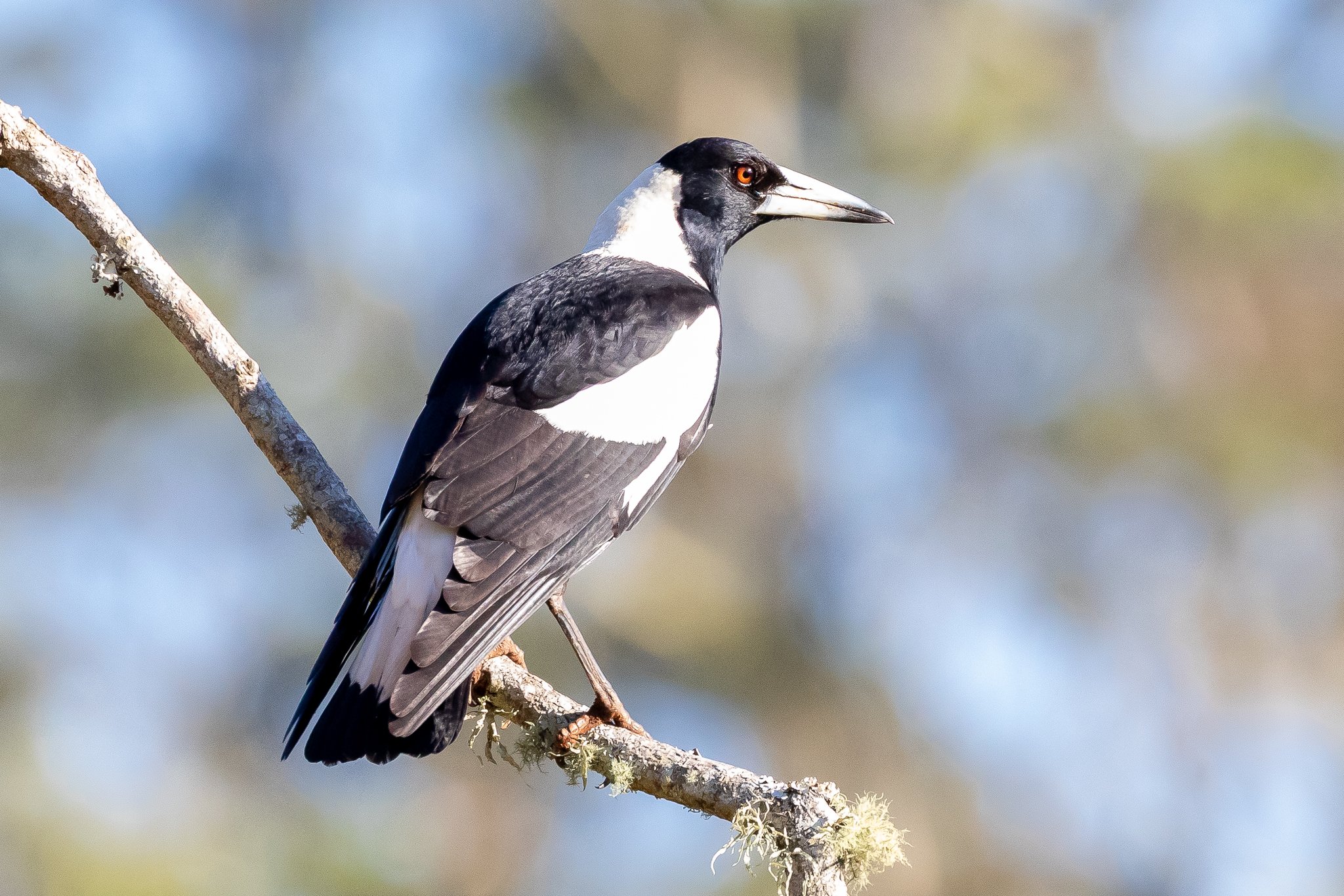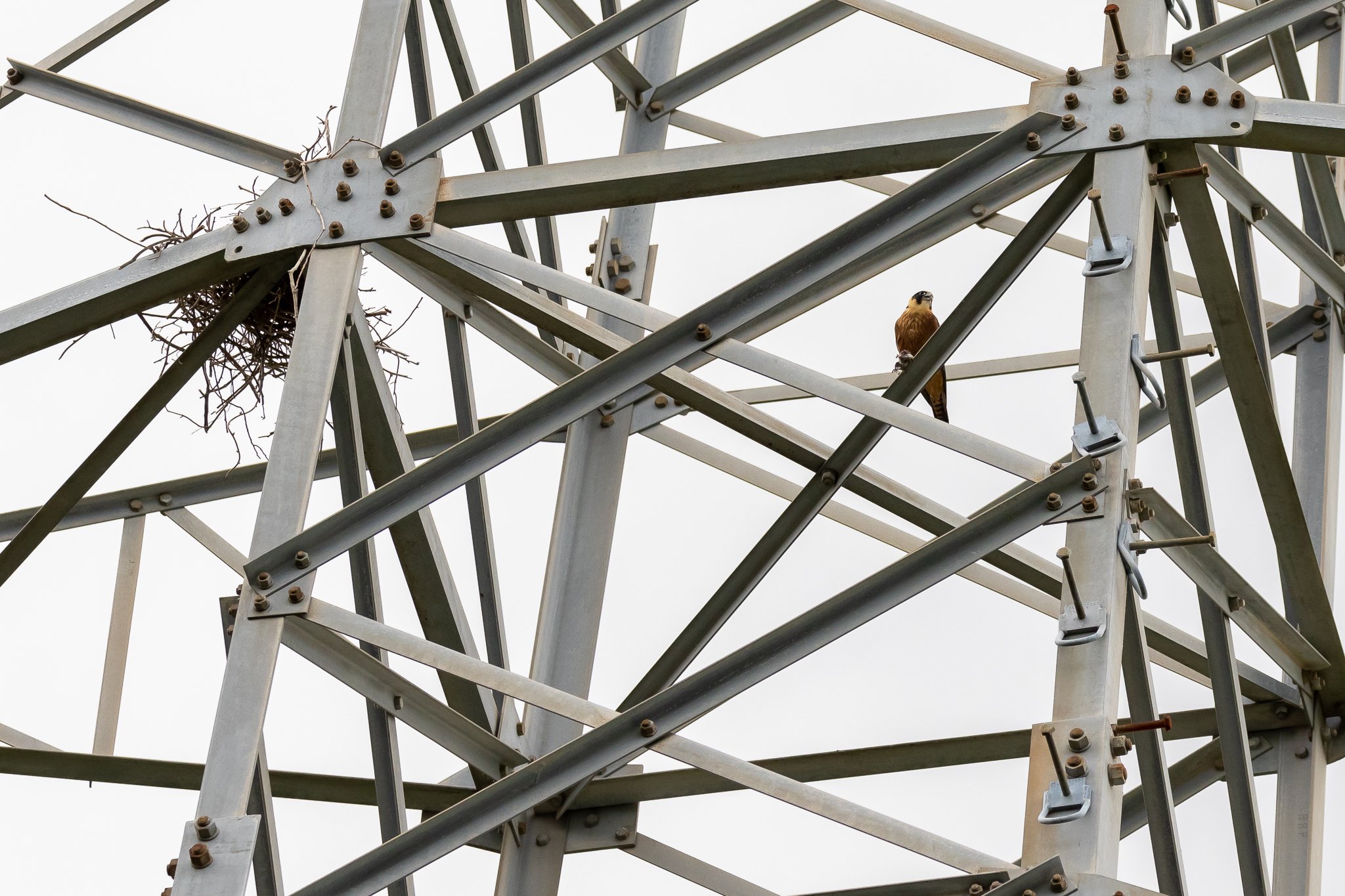Setting off on the Brisbane Rail Trail Cycle Track we saw many cyclists with long silver streamers trailing from their helmets, an ominous sign of magpies ahead. About five miles north of Esk the sign below appeared on the trackside, warning of imminent magpie attack. Only another hundred metres and the attacks began. Five magpies lined the trail, making continual swoops, fortunately none connecting despite our lack of protection.
The information centre in Fernvale supplies silver streamers to passing cyclists. The staff advised that zip ties have lost effectiveness in warding off magpies, that the streamers are working at the moment, but that they were expecting the magpies to get used to them with time.
A permanent sign warning of magpie attack! The danger zone is only metres ahead.
The protagonist Australian Magpie feared by all cyclists!






















